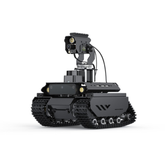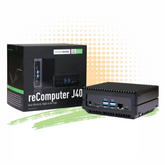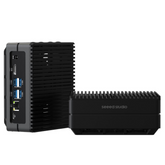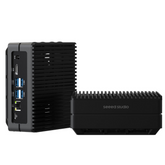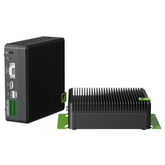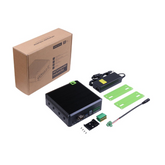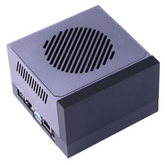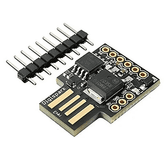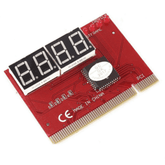What is Edge Computing?
Summary
Imagine standing at a crossroads where every second matters. If you’re waiting at a traffic light, it’s not helpful to know that the traffic data center located hundreds of miles away is crunching numbers to decide when the lights should change.
By the time the signal makes its way back to your intersection, it’s already too late. What you really need is for that decision to happen right there at the edge, without delay.
That’s what edge computing (EC) does. It provides speed, context-awareness, and real-time decision-making closer to where data is created.

What is Edge Computing?
EC means performing computation closer to the physical location where data originates, rather than sending everything to a centralized cloud server.
Instead of routing vast amounts of information across the internet to faraway data centres, the processing happens on edge devices and gateways, edge server systems, or even micro data centres geographically close to the data source.
In simple terms, it helps reduce the distance between raw data and actionable insights. Whether it’s a self-driving car making split-second safety judgments, or a retail store analyzing foot traffic in real time, it ensures decision-making happens rapidly, right at the “edge” of the network.
While cloud platforms remain an essential backbone of modern computing, relying solely on distant servers introduces latency and bandwidth issues.
To handle the explosion of IoT devices, real-time analytics, and emerging technologies such as edge AI and machine learning, businesses need more localized intelligence.
That’s where edge computing steps in. Let’s take a deep look at how it works, why it matters, and how industries are already using it.
What is the Network Edge?
The term “network edge” refers to the outer boundary of a network where the digital and physical worlds collide. It’s where end-user devices, sensors, cameras, machines, and IoT systems interact with computing infrastructure.
This zone could be as small as a smart thermostat in a home network, or as extensive as a fleet of delivery trucks equipped with connectivity and analytics tools.
By leveraging edge computers and distributed resources, the network edge moves data intelligence closer to where people and processes actually operate, eliminating unnecessary trips back to core systems.
How Does Edge Computing Work?
This architecture typically consists of three layers:
- Edge devices such as sensors, cameras, wearables, and autonomous machines that generate data.
- Intermediate nodes such as routers, edge server systems, or micro data centers that perform edge data processing functions.
- Cloud platforms that still provide broader analysis, storage, and long-term insights.
Here’s how the flow works:
- Data is generated by IoT devices, such as a factory sensor detecting equipment temperature.
- Instead of sending all raw data to a remote cloud, initial filtering, processing, and quick decisions happen locally, using edge-native applications.
- Only refined or relevant data is forwarded to the cloud for more resource-intensive analytics.
This layered approach enables real-time data processing at the edge, which minimizes delays and reduces network congestion.
For time-sensitive applications like medical monitoring or autonomous driving, milliseconds can mean the difference between success and disaster.
Core Technologies Powering Edge Computing
Several technologies make edge strategies possible:
- IoT Devices: Billions of interconnected devices continuously generate massive data streams across environments.
- Edge AI and Machine Learning: Localized models allow decisions like image recognition on surveillance cameras without cloud dependence.
- Edge Gateways: These bridge devices connect traditional equipment with digital systems, enabling seamless integration.
- Micro Data Centers: Compact, scalable data centers designed for edge locations to deliver computing capacity outside central hubs.
- Edge-native Applications: Software built specifically for distributed processing and resilience in varying network conditions.
Together, these components form a flexible model capable of supporting industries from healthcare to retail and beyond.
Difference Between Edge, Cloud & Fog Computing
While related, these architectures differ in scope and purpose:
| Feature | Edge Computing | Cloud Computing | Fog Computing |
|---|---|---|---|
| Location of Processing | Near or at the source of data | Centralized, remote data centers | Intermediate layer between edge and cloud |
| Latency | Extremely low | Higher due to distance | Moderate |
| Scalability | Limited, localized | Highly scalable | Provides balance between scalability & localization |
| Primary Use | Real-time responses and localized insights | Large-scale data analysis, storage, AI training | Coordinating thousands of distributed nodes |
| Example | Autonomous car reacting to a hazard | social media content recommendation | Smart city traffic system |
Thus, EC solution designs are best suited when immediacy is crucial, while the cloud serves as the long-term brain for deeper analysis.
How Industries Use Edge Computing
Companies ranging from Healthcare, Retail, Transportation etc. are rapidly deploying EC to improve efficiency, customer experience, and real-time decision-making.
- Healthcare: Devices like Philips’ IntelliVue Guardian Solution use edge-enabled patient monitoring to detect subtle health changes at the bedside. This system processes vital signs locally, triggering instant alerts to doctors before emergencies escalate. With edge AI and machine learning, hospitals can also scan medical images in real time to assist doctors in diagnosing conditions faster.
- Retail: Walmart and Amazon Go have deployed in-store sensors and smart shelves that use localized processing to study customer behavior. Cameras monitor shopping patterns, sending only relevant insights to central systems. This enables real-time inventory management and personalized offers without overwhelming cloud networks.
- Manufacturing: General Electric (GE) uses edge devices and gateways in its Predix platform to enable predictive maintenance. By analyzing machine vibration and temperature data at the edge, factories avoid costly breakdowns, saving millions in downtime. This localized approach improves both safety and productivity.
- Transportation: Self-driving technologies from Tesla and Waymo rely heavily on edge data processing. Vehicles process inputs from sensors, radars, and cameras in milliseconds to detect road hazards, pedestrians, or traffic signals. An autonomous vehicle can’t wait for cloud confirmation when a child runs into the street—it needs immediate edge decisions.
- Telecom: Verizon and AT&T use edge servers combined with 5G to offer ultra-low-latency services. This is vital for applications like AR/VR, cloud gaming, and remote robotics. By deploying micro data centers at the network edge, telecoms ensure smoother performance for millions of customers.
In all of these examples, edge data processing reduces reliance on the cloud, allowing industries to harness real-time responsiveness that traditional architectures simply cannot match.
Benefits of Edge Computing
The widespread adoption of EC is driven by specific benefits that companies across industries capitalize on.
- Reduced Latency: Edge systems allow applications to respond without round trips to the cloud. For instance, Tesla vehicles can instantly adjust braking or steering based on sensor input, ensuring passenger safety in real time.
- Bandwidth Efficiency: Coca-Cola uses localized edge processing at vending machines, sending only transactional and usage data to the cloud instead of streaming everything. This cuts costs and conserves bandwidth.
- Resilience: Even during network failures, systems continue running independently. Oil and gas companies operating offshore rigs use edge infrastructure, so critical systems remain operational when connectivity to the cloud is unstable.
- Data Privacy: Apple’s Face ID processes sensitive biometric data directly on the device instead of sending it to cloud servers, ensuring user security. This is a prime example of local processing enhancing privacy.
- IoT Scalability: Companies like Siemens rely on edge platforms to handle massive machine sensor data in factories without overloading cloud networks. This allows global industries to scale up their IoT ecosystems efficiently.
For businesses that want to maintain competitiveness, adopting an EC solution helps them meet modern expectations of instant, seamless digital interactions while also reducing unnecessary network strain.
Limitations of Edge Computing
Despite the incredible benefits, companies also face challenges in adopting EC architecture.
- Security Risks: With devices spread globally, the chances of cyberattacks rise. For example, Mirai botnet attacks exploited vulnerable IoT devices to create one of the largest cyber-attacks in history, showing the risks of multiple distributed attack vectors.
- Management Complexity: Operating thousands of edge servers proves difficult. Cisco has invested in tools for orchestrating, monitoring, and updating distributed edge environments, but for smaller firms this management task can be overwhelming.
- Hardware Costs: Setting up micro data centers requires heavy upfront investment. Microsoft Azure Stack Edge helps reduce these costs by offering hardware-as-a-service, but it still represents a significant financial commitment for many businesses.
- Limited Resources: Edge nodes can’t match the extensive computational capacity of large cloud data centers. Companies like Netflix still rely on centralized cloud infrastructure for heavy workloads while using edge caching servers to deliver faster local streaming.
The reality is that while edge brings exciting opportunities, organizations must balance costs, complexity, and security issues to create resilient edge computing models.
Many successful strategies involve combining both cloud and edge—leveraging the speed of local edge processing with the scalability of centralized infrastructures.
Future of Edge Computing
As billions of connected devices flood networks, the future is unmistakably distributed. The proliferation of edge-native applications, advanced edge AI and machine learning, and tighter integration with 5G and beyond will redefine how businesses operate.
Expect real-time data processing at the edge to become a competitive standard. Surgeons could one day use robotic tools that rely on ultra-fast edge nodes, or smart cities may self-regulate traffic, energy, and public safety seamlessly.
With trends moving toward decentralization, the EC model isn’t just an addition to cloud—it’s a fundamental shift in how digital infrastructure is conceived.
Conclusion
Edge computing bridges the critical gap between data generation and actionable intelligence. By pushing computation closer to the source, it reduces latency, strengthens resilience, and empowers industries to embrace real-time decision-making.
While it comes with added complexities, its growing importance—especially in our IoT-driven world—means businesses cannot ignore its potential.
In short, edge doesn’t replace the cloud. Rather, it complements it by delivering a hybrid future where localized speed meets centralized intelligence.



